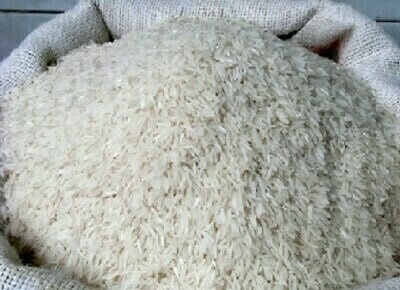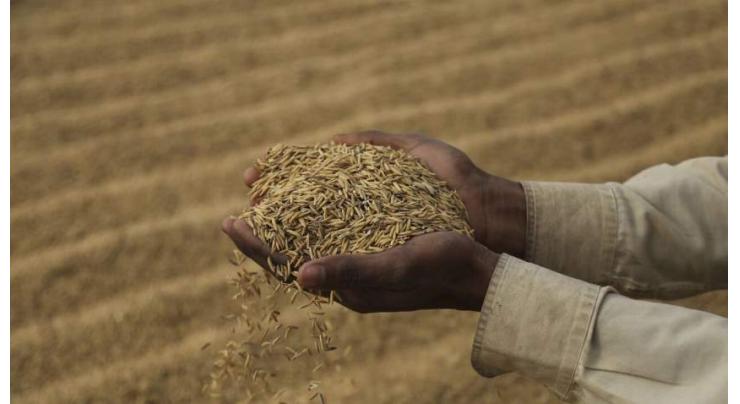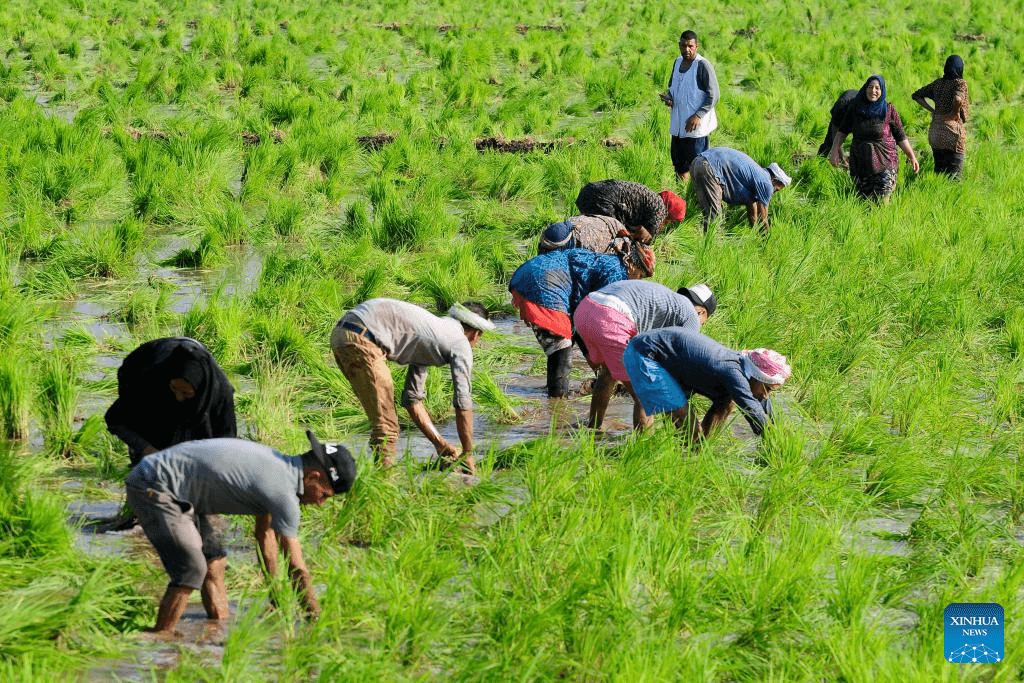Tags
India bans exports of some rice varieties: How this has impacted prices globally, in the country
What types of rice does India export? Which countries are the biggest buyers? How is the export ban playing out?

India is the biggest exporter of rice in the world. (Express file photo by Narendra Vaskar)
In July this year, India banned the export of non-basmati white rice amid depleting public stock in the Central pool, elevated cereal prices, and looming threat of the uneven monsoon.
The First Advance Estimates of major Kharif crops for 2023-24, released by the Ministry of Agriculture & Farmers’ Welfare on Friday, showed that the apprehensions regarding a dip in rice production were not untrue. The ministry has pegged rice production at 1063.13 Lakh Metric Tonnes (LMT) during Kharif 2023-24, 3.7 per cent lower than the 1105.12 LMT recorded in the same season last year.
We take a look at how India’s rice restrictions have made an impact on supply, availability and prices in domestic as well as global markets over the months.
Has India’s restrictions fueled the prices of rice across the globe?
Soon after India banned the export of non-basmati white rice on July 20, there was a sharp jump in the price of rice across markets. In the following months, prices have come down, but are still higher than the pre-ban period.
As per the Rice Outlook of the Economic Research Service, US Department of Agriculture, “Over the past month, quotes for trading prices for most grades of regular (neither parboiled nor aromatic) whole-grain milled rice from Thailand decreased 5−6 percent, mostly due to a weaker baht. For the week ending October 10, Thailand’s 100-percent Grade B long-grain milled rice for export was quoted at $595 per ton, down $34 from the week ending September 12 but still up more than $60 per ton from early July, prior to India’s implementation of export restrictions in late July and August. Thailand’s price rose rapidly from late July through mid-August, primarily in response to India’s July export ban on regular-milled white rice.”
Is there any impact on the domestic prices of rice?
There has been no respite from the increase in the prices of rice despite the export ban. As per the data available on the Agriculture Ministry’s UPAg portal, the daily average wholesale price of rice was recorded at Rs 5,800 per quintal on October 24, 2023, which was 27.43 per cent higher than a month ago (Rs 4,208.57 per quintal), 18.42 per cent higher compared with the price (Rs 4,731.32 per quintal) when the government announced the Open Market Sale Scheme (OMSS) on January 25, 5.82 per cent higher as compared to the price (Rs 5,462.06 per quintal) recorded when the government put in place export regulations on August 27, 2022, and 3.21 per cent higher as compared to the price (Rs 5,613.60 per quintal) a year ago.
The retail prices are also higher than last year. For instance, the daily average retail price of rice was recorded at Rs 42.80 per kg on October 24, which is 12.59 per cent higher than a year ago, and 11.72 per cent higher compared with the day the government put in place the export regulations.
On July 20, the day India banned the export of non-basmati white rice, the all-India daily average retail price of rice was recorded at Rs 40.89 per kg, which was 11.42 per cent higher than a year ago. The all-India average daily wholesale price of rice was recorded at Rs 3,587.34 per quintal on July 20, 11.95 per cent higher than a year ago.
How does India export rice? What is banned and what is not?
India is the biggest exporter of rice in the world. As per the United States Department of Agriculture (USDA), India accounted for about 40 per cent of the total rice exports (56 million tonnes) in the world during calendar year 2022.
India’s rice exports are broadly categorised into basmati and non-basmati rice. The non-basmati rice category includes 6 sub-categories— rice in husk of seed quality; other rice in husk; husked (brown) rice; rice parboiled; non-basmati white rice; and broken rice. While the government has banned export of two sub-categories of broken rice and non-basmati white rice, there is no ban on the remaining four sub-categories.
Basmati Rice
In the financial year 2022-23, India’s basmati export stood at 45.61 lakh metric tonnes. Iran, Saudi Arabia, Iraq, UAE, and Yemen were the top 5 destinations of Indian basmati during 2022-23. In all, India exported basmati to 149 countries during the last financial year. During the first five months (April-August) of the current financial year (2023-24), the basmati rice export has reached 20 lakh metric tonnes.
Non-Basmati Rice
The non-basmati rice includes varieties like Sona Masuri and Jeera rice. In financial year 2022-23 (April-March), India exported 177.91 lakh metric tonnes of non-basmati rice, of which a maximum 78.48 lakh metric tonnes was parboiled rice, and it was followed by non-basmati white rice (64.01 lakh metric tonnes), and broken rice (30.49 lakh metric tonnes). The other three categories accounted for a lower quantity: other rice in husk (4.61 lakh metric tonnes); rice in husk of seed quality (19.68 thousand metric tonnes); and husked (brown) rice (11.65 thousand metric tonnes).
Non-basmati White Rice
Out of the 64.01 lakh metric tonnes of non-basmati white rice India exported during the last financial year, a maximum of 5.82 lakh metric tonnes was exported to Benin, followed by Madagascar (5.55 LMT), and Kenya (5.46 LMT). Cote D’ Ivoire, Mozambique, Vietnam, Angola, Togo and Nepal were other countries among the top 10 buyers of India’s non-basmati white rice. In all, India exported the non-basmati white rice to 142 countries during 2022-23. Most of these countries were poor, and were located in Africa.
In the first 5 months (April-August) of the current financial year (2023-24), 19.74 lakh metric tonnes of non-basmati white rice has been exported to 117 countries, with Kenya (4.12 lakh metric tonnes) topping the chart, followed by Mozambique (2.01 lakh metric tonnes, and Vietnam (1.53 lakh metric tonnes).
India’s non-basmati white rice exports stood at 52.19 lakh metric tonnes in 2021-22 and 42.34 lakh metric tonnes in 2020-21.
Before India banned the export of non-basmati white rice, 86-88 countries, mostly low-income economies, were buying over 4 lakh metric tonnes of this category of rice from New Delhi every month during April-June, 2023. However, when New Delhi banned exports, the quantity of grain shipped out marginally declined to 3.8 lakh metric tonnes in July. It crashed in the following month—August (0.39 lakh metric tonnes). The number of countries importing Indian non-basmati white rice declined to 25.
Notwithstanding the ban, non-basmati white rice export is allowed on the basis of “permission granted by the Government of India to other countries to meet their food security needs and based on the request of their Government.”
Broken Rice
Before India banned export of broken rice in September last year, every month, 40 countries imported over 4 lakh tonnes of broken rice from India. After New Delhi banned the export of broken rice on September 9, 2022, the number of countries declined to 21 in September, and to 6 in October.
In the financial year 2022-23, India’s broken export stood at 30.49 lakh metric tonnes, of which a maximum 12.80 lakh metric tonnes was exported to China, followed by Senegal (10.26 lakh metric tonnes), and Indonesia (1.94 lakh metric tonnes).
Par-boiled Rice
The dictionary meaning of ‘parboil’ is ‘partly cooked by boiling’. Thus, the term par-boiled rice refers to the rice that has been partially boiled in paddy form before milling. There is no ban on export of this category of rice from India. In 2022-23, India exported 78.48 lakh metric tonnes of par-boiled rice to 131 countries. Benin (9.69 lakh metric tonnes), Bangladesh (7.26 lakh metric tonnes), Guinea (7.07 lakh metric tonnes), Côte D’ Ivorie (6.97 lakh metric tonnes), and Togo (6.89 lakh metric tonnes) were the top five importers of the Indian par-boiled rice in the last financial year.
In the first five months (April-August) of the financial year 2023-24, 37.72 lakh metric tonnes of par-boiled rice has been exported, which is 19.28 per cent higher than 31.62 lakh metric tonnes in the same period last year. In the current financial year, Benin, Guinea, Togo, Somalia and Vietnam are the top five buyers of Indian par-boiled rice.
Husked (Brown) Rice
The husked (brown) rice is the type of rice from which only the husk has been removed, while the brown rice is unpolished rice. A quantity of 11,656.86 metric tonnes of husked (brown) rice was exported from India during the financial year 2022-23, which was 76.80 per cent lower than the quantity (50,249 metric tonnes) exported in the year 2021-22. Netherlands, UK, USA, Saudi Arabia, and Canada were top 5 buyers of this category of rice during the last financial year. In the first five months of the current financial year, only 7,146 metric tonnes of husked (brown) rice have been exported.
Rice in Husk of Seed Quality
In the financial year 2022-23, a quantity of 19,681 metric tonnes of ‘rice in husk of seed quality’ was exported. In the first five months of the current financial year, the export of this category of rice stood at 10,697 metric tonnes.
Other Rice in Husk
India exported a quantity of 4.61 lakh metric tonnes of ‘Other Rice in Husk’ during 2022-23, of which almost 99 per cent went to Nepal. In the current financial year, a quantity of 2.02 lakh metric tonnes of this category of rice during the first five months. Of this ,almost the entire quantity has been exported to Nepal.
Rice procurement, requirement
Total production of rice during 2022-23 is estimated to be at a record 1357.55 lakh tonnes. It is higher by 62.84 lakh tonnes than previous year’s Rice production of 1294.71 lakh tonnes and by 153.65 lakh tonnes than the last five years’ average production of 1203.90 lakh tonnes.
https://indianexpress.com/article/explained/explained-economics/india-bans-exports-of-some-rice-explained-9004685/Published Date: October 31, 2023






